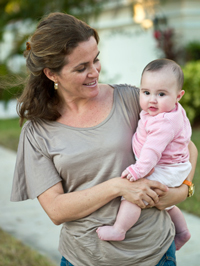Category: birth rates
Births: Preliminary Data for 2014
NCHS has just released a new report that presents preliminary data on births and birth rates and selected maternal and infant health characteristics for the United States in 2014. Key Findings from the Report: The 2014 preliminary number of U.S. births was 3,985,924, an increase of 1% from 2013. The number of births increased for women Read More >
Posted on byBirths: Final Data for 2013
A new NCHS report presents 2013 data on U.S. births according to a wide variety of characteristics. Data are presented for maternal age, live-birth order, race and Hispanic origin, marital status, attendant at birth, method of delivery, period of gestation, birthweight, and plurality. Birth and fertility rates are presented by age, live-birth order, race and Hispanic origin, Read More >
Posted on byBirths in the United States, 2013
A new NCHS report presents 2013 final birth data on several key demographic and maternal and infant health indicators. Trends in the number of births, general fertility rates, age-specific birth rates, and cesarean delivery rates by race and Hispanic origin, as well as trends in preterm births by state and trends in twin births are explored, Read More >
Posted on byNational and State Patterns of Teen Births in the United States, 1940–2013
Teen childbearing in the United States has been declining for more than half a century. Except for a brief but steep increase in teen birth rates from 1986 to 1991 and smaller upturns during 1969–1970, 1979–1980, and 2005–2007, birth rates for U.S. teenagers have fallen since 1957. The birth rate in 2013, 26.6 births per Read More >
Posted on byNews Brief: Older Women, First Births

A recent NCHS Data Brief, drawing on data collected through the National Vital Statistics System, has received nationwide media attention for its findings on first-time births to older mothers. Data Brief No. 152, “First Births to Older Women Continue to Rise,” found significant increases over the past four decades in the average age of women Read More >
Posted on byDeclines in Infant Mortality
Infant mortality is an important indicator of the health of a nation. A new NCHS report describes the recent decline in the U.S. infant mortality rate from 2005 through 2011. Changes in infant mortality rates over time are examined by age at death, maternal race and ethnicity, cause of death, and state. In 2011, the Read More >
Posted on byTeen birth rates drop after two-year increase
A new report from NCHS, “Births: Preliminary Data for 2008,” found that the teen birth rate in the U.S. fell 2 percent between 2007 and 2008, after rising the previous two years. In 2008, the birth rate declined for all age groups under 20 years, except for the youngest teenagers ages 10-14, which remained unchanged Read More >
Posted on byOut-of-hospital births increase
A recent report released by NCHS showed an increase in the number of home and out-of-hospital births. In 2006, there were 38,568 out-of-hospital births in the United States, including 24,970 home births and 10,781 births occurring in freestanding birthing centers. The report also found that there was a decline between 1990 and 2004 in the number Read More >
Posted on byPregnancy rates decrease in United States
In 2005, an estimated 6,408,000 pregnancies resulted in 4.14 million live births, 1.21 million induced abortions, and 1.06 million fetal losses. The 2005 pregnancy rate of 103.2 pregnancies per 1,000 women aged 15–44 years is 11 percent below the 1990 peak of 115.8. The teenage pregnancy rate dropped 40 percent from 1990 to 2005, reaching Read More >
Posted on by
